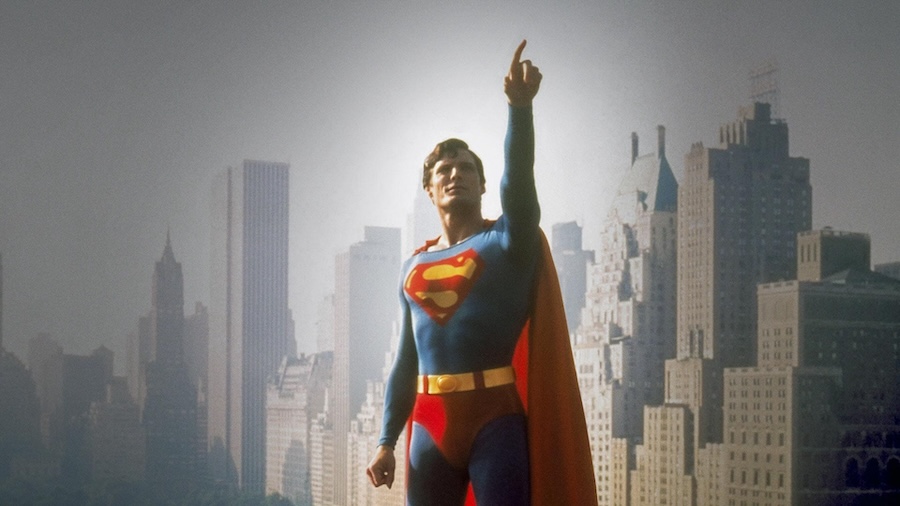
HUSBAND. FATHER. FIGHTER. HERO.

While preparing for a TV movie called Above Suspicion in 1995, Christopher Reeve did some research. He was cast as a police officer who had been paralyzed and he needed to find out what that was like. After spending time with paraplegics in a hospital in Van Nuys, he couldn’t help but think what anyone would: ”Thank God that isn’t me”. Less than a week after the film’s premiere on HBO, Reeve was rushed to the hospital after an accident involving his horse. The star had been thrown off, landing head first. He was incredibly lucky – and unlucky. Had he fallen in a slightly different way, he would’ve been able to simply walk away. Had his head landed inches in another direction, he would’ve been instantly killed. He survived, with a spinal injury that left him paralyzed from the neck down and unable to breathe on his own.
Now, we in the audience get to think, ”thank God that isn’t us”… and mourn a man whose life became far more important than if he had simply continued as another healthy movie star.
Back and forth between different periods
Filmmakers Ian Bonhôte and Peter Ettedgui, who did an excellent job portraying fashion icon Alexander McQueen in a 2018 documentary, made a very wise decision when pondering how to structure a movie about Christopher Reeve. If you tell his story in a linear way, you risk ending up with something that’s very lighthearted at first and then grows depressingly dark until the inevitable end when Reeve dies from complicated health issues in 2004. Instead, the filmmakers go back and forth between different periods, building a rich portrait of the actor and what he was like.
We learn how serious he was about his craft, starting out in theater where he became close friends with his roommate, Robin Williams. After auditioning for the role of Clark Kent and Superman in what would be one of the biggest movies of 1978, the 26-year-old Reeve became an icon known all over the world… but was still unable to impress his father who wanted a more intellectual destiny for his son. As we follow Reeve’s career and how it took a downturn in the 1980s, we also learn how his first marriage to Gae suffered and ended in divorce, followed by a romance with Dana. This is where we see a less likable side of Reeve, one that humanizes this handsome superman; his choices at this time alienated his wife and his eldest son Matt. So much in the film is a tribute to Reeve and what he accomplished that we need to view him in a more nuanced light as well.
Three sources in the film
The documentary goes into Reeve’s accident in depth and we understand how close he was to dying. The voices telling us about his battle come from three sources: his friends (including Glenn Close and Susan Sarandon); his audiobooks ”Still Me” and ”Nothing Is Impossible”; and his children Matt, Alexandra and Will. One big reason why this is such an emotional film is because of their presence; it becomes a journey through their childhood and what they experienced after the accident.
It’s impossible not to be in tears as the tragedy grows deeper.
Adding to the film’s impact is the fate of Robin Williams and how he was affected by Reeve’s death. It’s impossible not to be in tears as the tragedy grows deeper, but it’s also an inspiring portrait of a family that struggled together and really made a difference in the field of science, thanks to their fame and fundraising.
Made with great skill, the film is also cleverly illustrated, using images of an idealized male body to symbolize Superman, the power of kryptonite and the effects of the accident.
Super/Man: The Christopher Reeve Story 2024-U.S.-U.K. 104 min. Color. Directed by Ian Bonhôte, Peter Ettedgui. Screenplay: Ian Bonhôte, Peter Ettedgui, Otto Burnham.
Trivia: Jeff Daniels, John Kerry and Whoopi Goldberg are also interviewed in the film.
BAFTA: Best Documentary.
Last word: “We kind of thought Warner Bros. might be interested in [the film], but we were also worried. So we approached the studio as a licensor. Whether it be images of Superman, the iconography of Superman, the music of Superman. We felt we had to create all of this within our independent budget before we present the film at Sundance. And that also necessitated certain compromises, because the studio was unwilling to license too much of the music, for example.” (Ettedgui, Indiewire)
